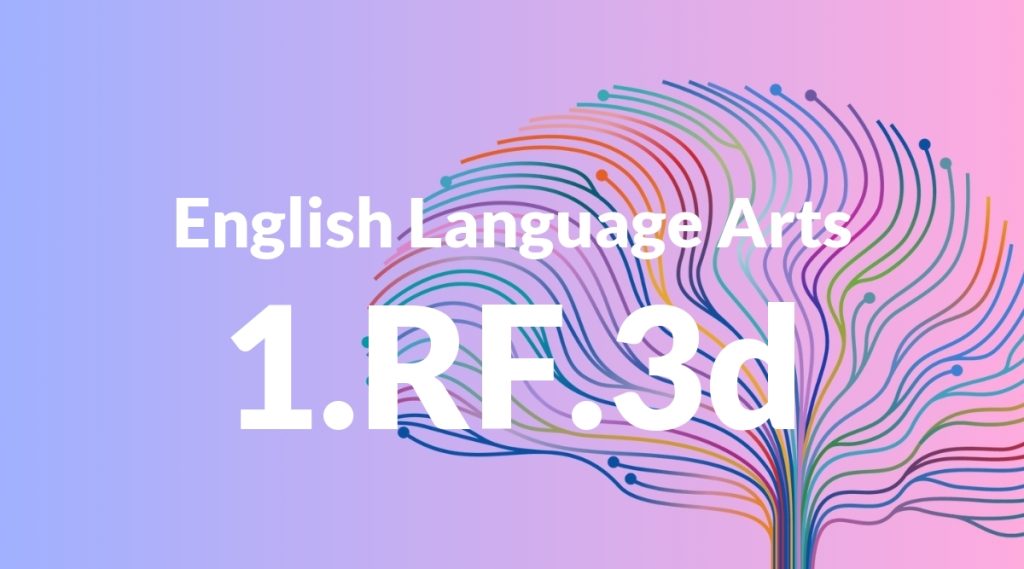Standard: 1.RF.3d – Use knowledge that every syllable must have a vowel sound to determine the number of syllables in a printed word.
Grade level: Grade 1
Subject: English Language Arts
Domain: Reading: Foundational Skills
Teacher Overview
This standard focuses on helping students understand that every syllable in a word must contain a vowel sound. This foundational skill is critical for developing decoding skills, which are essential for reading fluency and comprehension. Students should already be able to recognize and produce vowel sounds and have a basic understanding of what a syllable is. They should also have some phonemic awareness skills.
After mastering this standard, students will be able to decode multisyllabic words, which will improve their spelling, pronunciation, and reading fluency.
Common Misconception 1
A common misconception is that every letter has a vowel sound. This is incorrect because only vowels (a, e, i, o, u, and sometimes y) produce vowel sounds, while consonants do not.
Intervention 1
Use visual aids like letter cards and hands-on activities such as clapping or tapping out syllables to reinforce the concept that only vowels produce vowel sounds.
Common Misconception 2
Another misconception is that a silent ‘e’ at the end of a word counts as a separate syllable. This is incorrect because the silent ‘e’ does not add an extra syllable but instead modifies the preceding vowel sound.
Intervention 2
Provide practice with words ending in silent ‘e’ and use visual aids to show that the silent ‘e’ changes the vowel sound but does not add a syllable.
Prerequisite Knowledge
Students should recognize and produce vowel sounds, understand what a syllable is, and have basic phonemic awareness skills.
Subsequent Knowledge
Students will be able to decode multisyllabic words, improve their spelling and pronunciation, and enhance their reading fluency.
Instructional Activities
- Clapping hands for each syllable in a word
- Using a mirror to see mouth movements for each syllable
- Counting syllables in names of classmates
- Breaking down words in a favorite storybook
- Using a syllable-counting app or game




